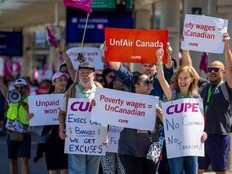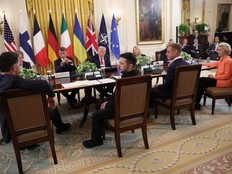JAY GOLDBERG: Carney’s voodoo budgeting puts taxpayers last

Article content
Deficits, deficits and more deficits.
That’s Liberal Leader Mark Carney’s plan when it comes to budgeting, as he hopes to lead the nation for the next four years.
Many Canadians are alarmed at the sheer scale at which the Liberals have piled up debt over the past decade. Since the Trudeau Liberals came to power in 2015, the federal debt has more than doubled.
Carney’s answer? He says he’ll “spend less” and “invest more.”
For a man who’s only been a politician for a matter of months, he sure has mastered creative talking points.
Anyone with common sense knows that when the government spends money, it spends it. A politician can call spending an investment, but it’s still that: spending.
For example, spending money on a new bridge could be called “spending” or an “investment.” Transferring health-care funding to the provinces could be seen as “spending” or an “investment in Canadians’ health.”
Governments can label virtually any spending item as an “investment” if they get their talking points creative enough.
Carney’s slogans are nothing more than word games.
Now, let’s dig into the actual plan.
For starters, Carney’s plan spends more than Trudeau’s. Far more. For Canadians who thought a smart central banker would come in and clean up the Trudeau government’s mess, tough luck.
When the Trudeau government tabled its infamous fall economic statement — the one former finance minister Chrystia Freeland refused to deliver because it spilt too much red ink — the government laid out a plan to run roughly $130 billion in deficits over the next four years.
It also included no plan to balance the budget.
How about Carney’s plan?
He intends to add another $130 billion in new spending.
That’s $95 billion more than Trudeau’s plan.
Freeland resigned rather than tabling a fall economic statement with a $61.9-billion deficit. Today, she’s happily running for re-election under a leader who is promising to run a deficit of $62.3 billion this year.
Interest charges on the federal debt are already costing Canadians more than $1 billion a week. Carney’s plans will take things from bad to worse.
Perhaps the saddest part of all of this is that all of this red ink isn’t even being spilled to genuinely help Canadians.
Fifty per cent of Canadians say they’re $200 away from not being able to pay their bills.
Out of all of Carney’s new spending, which amounts to $130 billion over four years, just 18% of it is going to tax relief.
First off, tax cuts should never be considered as “spending,” as they are in the Liberal platform. Leaving money in taxpayers’ pockets, where it belongs in the first place, is not a spending item.
Beyond that, the Liberals really only have two tax cut measures that will help a significant portion of Canadians: A plan to lower the lowest income tax bracket from 15% to 14%, saving families up to $825 a year, and a plan to remove the GST on new-build homes for first-time homebuyers.
At a time when Canadians are in a clear cost-of-living crunch, the Liberals chose to go heavy on the spending instead of prioritizing tax relief.
The Conservative platform, by contrast, offers a bigger income tax cut and more GST relief to more buyers. And those are just two of many tax relief proposals.
Carney is trying to say he’s going to fix the federal budget by dividing it up into pieces. He plans to throw a bunch of spending, both new and old, under the label “capital” and then claim that the budgetary picture is improving by only looking at “operating” expenses when judging the government’s fiscal performance.
That’s like taking out a second credit card, putting what you think are “smart” expenses on the second credit card, then smiling when the balance on the first credit card stops piling up so high.
It’s voodoo economics. Coming from a central banker, no less.
In this election, if your priority is for a government to “spend less” and let you “invest more,” the Carney Liberals aren’t your pick.











Postmedia is committed to maintaining a lively but civil forum for discussion. Please keep comments relevant and respectful. Comments may take up to an hour to appear on the site. You will receive an email if there is a reply to your comment, an update to a thread you follow or if a user you follow comments. Visit our Community Guidelines for more information.